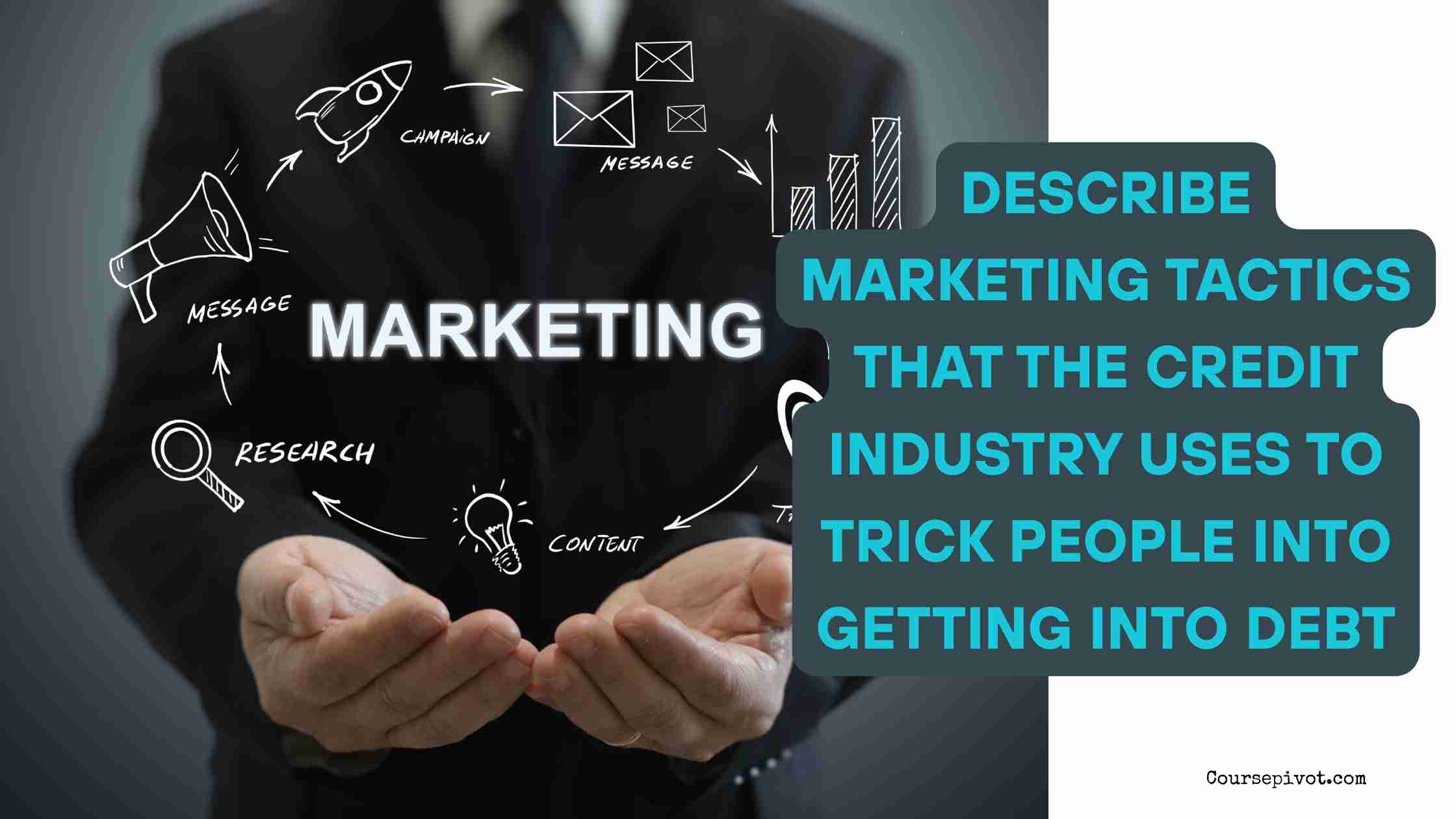
Marketing Tactics That the Credit Industry Uses to Trick People Into Getting Into Debt
Have you ever gotten a credit card offer in the mail that promised “0% APR for 18 months” or seen a shiny ad online for “instant approval”? I have—and I almost fell for it. These offers sound too good to pass up, but underneath that glossy surface lies a web of credit industry marketing tactics designed to trap you in debt, not help you build wealth.
Table of Contents
The truth is, credit companies don’t profit when you pay on time. They win when you slip up—just once. And their advertising is engineered to make that happen.
So, what are these tricks? Why do so many people—smart people—fall into credit traps?
Let’s break it down. Because once you understand how the credit industry manipulates consumers, you can start to protect yourself from getting buried in interest, fees, and false promises.
The Power of Emotional and Psychological Triggers
1. FOMO (Fear of Missing Out)
Credit marketing often uses urgency phrases like:
- “Limited-time offer!”
- “Only for select cardmembers.”
- “Act now before it’s gone.”
This creates the illusion that if you don’t sign up immediately, you’re losing something valuable. It’s a classic psychological trick.
I once accepted a card simply because the ad said “pre-approved VIP”—and let’s be honest, who doesn’t want to feel like a VIP?
- Read our blog on Marketing Assignment Helper: Do my Marketing Homework
2. Lifestyle Branding
Credit card ads rarely talk about interest rates or fees. Instead, they sell you a dream:
- Luxury vacations.
- Designer shopping.
- Elite airport lounges.
They associate their products with success and freedom. But using credit to look rich will often make you the opposite.
These marketing tactics fool people into believing credit = lifestyle, when really, credit is debt—and it always comes with a price.
Hidden Costs Behind “Free” Promotions
3. Introductory APR Traps
You’ve seen it before: “0% interest for 12 months!”
What they don’t advertise loudly is what happens after the promotional period ends. Suddenly:
- The rate jumps to 20–30%.
- Any balance remaining is now being charged retroactive interest.
- One late payment can void the intro offer.
I learned this the hard way. That “free financing” deal cost me hundreds when I missed the fine print about the default interest rate.
4. Rewards That Encourage Overspending
Cashback and travel points sound like you’re getting free money. But in reality:
- You spend more to chase rewards.
- You carry a balance thinking, “Well, I’m earning points, right?”
- Those points rarely outweigh the interest you’ll pay.
These deceptive marketing tactics make it easy to justify bad financial choices in the name of “rewards.”
Targeting the Most Vulnerable Consumers
5. Students and Young Adults
College students are a goldmine for credit companies. Why?
- They’re inexperienced with money.
- They’re more likely to carry a balance.
- They fall for low-limit cards with high interest rates.
Credit booths on campus used to lure me with pizza or t-shirts in exchange for signing up. That’s not financial literacy—it’s predatory marketing.
6. Subprime and Low-Income Consumers
People with poor credit or tight budgets are often flooded with “second-chance” credit cards that:
- Charge annual fees.
- Include setup fees.
- Offer low limits with high rates.
These people often need help, not traps. But the credit industry’s tactics ensure they stay stuck in a cycle of repayment, renewal, and relapse.
Disguising Debt as Empowerment
7. “Buy Now, Pay Later” Schemes
Services like Klarna and Afterpay advertise convenience:
- “Split into 4 easy payments.”
- “No interest (if you qualify).”
But they’re still forms of debt—short-term loans dressed as flexibility. And if you miss a payment, it affects your credit and racks up late fees.
I used BNPL once for a $150 pair of shoes I didn’t even need. That’s the trick—these tools make you feel empowered, while slowly tightening the debt noose.
Recognize the Game Before You Play It
Marketing tactics that the credit industry uses to trick people into getting into debt include emotional manipulation, fake urgency, lifestyle branding, misleading promotions, and targeting vulnerable groups like students and low-income consumers.
They disguise debt as opportunity and use “free” offers to hook you into long-term payments, often at high interest rates. I’ve experienced firsthand how easy it is to fall for a card that seems helpful but ends up costing more than it’s worth.
The best protection? Awareness. Once you know these tricks, you’ll start to see them everywhere—and that’s the first step to staying debt-free.
Cite this article
You can copy and paste your preferred citation format below.
Martin, L. & Arquette, E.. (2025, May 24). Marketing Tactics That the Credit Industry Uses to Trick People Into Getting Into Debt. Coursepivot.com. https://coursepivot.com/blog/describe-marketing-tactics-that-the-credit-industry-uses-to-trick-people-into-getting-into-debt/



